
The Times è un quotidiano britannico che si stampa a Londra, famoso in tutto il mondo.
Fu il primo a chiamarsi Times, pertanto non va confuso con i molti altri giornali del mondo che hanno un nome simile, ad esempio il New York Times, il Times of India, l'Irish Times ed il settimanale d'attualità TIME. Una caratteristica del giornale è stato il celeberrimo carattere tipografico Times New Roman, usato dal 1932 ma oggi sostituito con un carattere più adeguato.
Assieme al Sunday Times, il Times è pubblicato dalla Times Newspapers Limited, che a sua volta fa parte di News International, a sua volta posseduta dal gruppo News Corporation di proprietà di Rupert Murdoch. Il quotidiano tradizionalmente si colloca nell'area moderata, vicina al Partito Conservatore. Ciò non gli ha impedito di dare il suo sostegno nel 2001 e nel 2005 al Partito Laburista di Tony Blair alle elezioni politiche.
Il 26 novembre 2003, imitando il concorrente Independent, il Times è uscito per la prima volta in due formati: il tradizionale "nove colonne" (74,9x59,7 cm, broadsheet in inglese) e il tabloid, il formato della stampa popular. Dopo quasi un anno di prova le vendite sono salite da 560.000 a 660.000; l'editore ha deciso di passare definitivamente al tabloid: una svolta storica per la stampa inglese. L'allora direttore Robert Thomson, nell'editoriale del 30 ottobre 2004 annunciava ai lettori il passaggio al nuovo formato.
Dal 6 giugno 2006 il quotidiano ha anche un'edizione negli Stati Uniti.
Nel novembre 2006 il Times ha iniziato a stampare i titoli con un nuovo carattere, Times Modern.
Nel 2006 il Times ha avuto una tiratura media di oltre 650.000 copie al giorno.
Indice[nascondi]
1 Gli inizi
2 Date storiche
3 Eventi
4 Proprietari
5 Direttori
6 Firme principali
7 Curiosità
8 Altri progetti
9 Collegamenti esterni
Gli inizi[modifica]
Il Times nasce il 1 gennaio 1785, su iniziativa dell'uomo d'affari londinese John Walter. Registrato in un primo tempo come The Universal Daily Register, cambiò testata tre anni dopo, assumendo il nome attuale. L'idea di Walter era di creare un giornale indipendente dai partiti e senza un vera e propria classe sociale di riferimento. Le vendite tuttavia stentavano a decollare, ferme a circa 1600 copie vendute a 3 pence l'una.
A cambiare le cose fu la Rivoluzione francese, le cui tempestive notizie permisero al quotidiano di quasi triplicare la sua tiratura, arrivando a circa 4200 copie. La rapidità nel riportare i grandi fatti dell'Europa, la sua autorevolezza e la grande qualità di scrittura sono fra le qualità indicate fra i promotori del quotidiano. Caratteristico del Times di quell'epoca era la mancanza di una vera e propria prima pagina informativa, sostituita da una pagina contenente una serie di personals, annunci di carattere economico o sociale (nascite, morti, matrimoni). Altro elemento caratteristico era la mancanza di firme in calce ai pezzi pubblicati.
Merito del Times è anche quello di aver ospitato le prime forme di corrispondenza dall'estero e di reportage di guerra, come quelli di William Howard Russell durante la Guerra di Crimea. Direttori di questo periodo sono lo stesso John Walter, il figlio John Walter II (dal 1803), John Stoddart (dal 1809), Thomas Barnes (dal 1817) e John Thadeus Delane (dal 1841).
Nel 1860, l'editore John Walter III introdusse per la prima volta fra i quotidiani la rotativa Walter, che permetteva la stampa di 60.000 copie al giorno. Questa permise al Times di sfiorare, nel 1890, una tiratura di 300.000 copie giornaliere.
Date storiche[modifica]
1785: John Walter fonda il London Daily Universal Register
1788: il Register cambia nome in The Times;
1806: apparizione delle prime illustrazioni;
1814: è il primo giornale ad essere stampato con l'ausilio del motore a vapore;
1908: lord Northcliffe acquista il giornale;
dal 1922 al 1966: comprato dapprima da Major Astor, poi da Roy Thomson;
1978: le pubblicazioni sono sospese dall'editore, Thomson Organisation, a causa della vertenza sindacale aperta dai poligrafici in vista del passaggio dalla fotocomposizione al computer.
13 novembre 1979: riapre dopo 50 settimane. Il numero del rilancio viene stampato in 500.000 copie;
1981: il magnate australiano Rupert Murdoch acquista il quotidiano.
1986: in una sola notte 5000 persone vengono trasferite da Fleet Street (la storica via della stampa inglese) fuori Londra. Murdoch ingaggia un'aspra battaglia con poligrafici e giornalisti, prevalendo dopo sette mesi.
Eventi[modifica]
Il Times, con il British Film Institute, sponsorizza il London Film Festival (o meglio, The Times bfi London Film Festival). Nel 2005 è il più grande festival cinematografico europeo.
Il Times sponsorizza anche il Cheltenham Festival of Literature.
Proprietari[modifica]
John Walter (1785–1803)
John Walter II (1803–1847)
John Walter III (1847–1894)
Arthur Fraser Walter (1894–1908)
Lord Northcliffe (1908–1922)
la famiglia Astor (1922–1966)
Roy Thomson (1966–1981)
News International, guidata da Rupert Murdoch (1981— )
Direttori[modifica]
John Walter (1785–1803)
John Walter II (1803–1809)
John Stoddart (1809–1817)
Thomas Barnes (1817–1841)
John Delane (1841–1877)
Thomas Chenery (1877–1884)
George Earle Buckle (1884–1912)
George Geoffrey Dawson (1912–1919)
Henry Wickham Steed (1919–1922)
George Geoffrey Dawson (1923–1941)
Robert McGowan Barrington-Ward (1941–1948)
William Casey (1948–1952)
William Haley (1952–1966)
William Rees-Mogg (1967–1981)
Harold Evans (1981–1982)
Charles Douglas-Home (1982–1985)
Charles Wilson (1985–1990)
Simon Jenkins (1990–1992)
Peter Stothard (1992–2002)
Robert Thomson (2002—2007)
James Harding (2007— )
Firme principali[modifica]
Rachel Campbell-Johnston
Sam Coates
Ben Hoyle
Hugo Rifkind
Anthony Browne
Hugh McIlvanney
Richard Ford
Martin Samuel
Simon Barnes
Frances Gibb
Benjamin Cohen, editorialista sull'e-business
Adam Fresco
Alan Coren
Ruth Gledhill
Giles Coren
Andrew Pierce
Robert Crampton
Nigel Hawkes
Michael Gove
Philip Webster
Tim Hames
Stewart Tendler
Anthony Howard
Philip Howard
Mick Hume
Anatole Kaletsky
Magnus Linklater
Anthony Loyd, corrispondente di guerra
Ben Macintyre
Caitlin Moran
Richard Morrison
Kate Muir
Matthew Parris
Libby Purves
William Rees-Mogg
Peter Riddell
Hugo Rifkind
Nick Robinson
Mary Ann Sieghart
Andrew Sullivan
Janice Turner
Aki Riihilahti
Jeremy Clarkson
Curiosità[modifica]
Durante il periodo in cui Ian Fleming scrisse i libri della serie James Bond, Fleming aveva stabilito che James Bond spesso fosse un lettore di The Times.
In alcuni dei tanti film su Sherlock Holmes viene attribuita al grande detective la frase "Il Times è l'arma più fidata che esista!" che tuttavia, al pari della altrettanto e ancor più fortunata "Elementare, Watson!" non compariva nella versione originale di Sir Arthur Conan Doyle.
Nel classico di George Orwell, 1984 (scritto negli anni 1940), il personaggio principale Winston Smith lavora al Ministero della Verità. Il suo lavoro era di modificare gli articoli delle edizioni precedenti del The Times in modo da essere conforme alle direttive governative.
Nello sketch dei Monty Python, Ministry of silly walks, il personaggio principale interpretato da John Cleese compra una copia del The Times prima di recarsi al ministero.
Nel suo libro Notes From a Small Island, Bill Bryson scrive che quando era deputy editor della sezione affari al The Times, spesso non poteva aver accesso alle quotazioni del mercato azionario, principalmente poiché un collega spesso rifiutava di fornirgliele. Come risultato, e per più di un anno, utilizzò le quotazioni della prima edizione del Financial Times.
Altri progetti[modifica]
Wikimedia Commons contiene file multimediali su The Times
Collegamenti esterni[modifica]
(EN) Sito ufficiale
(EN) Wapping: eredità della rivoluzione di Rupert, 15 gennaio 2006 - The Observer - Tre punti di vista sulla disputa industriale di venti anni fa.
Portale Editoria
Portale Regno Unito
Estratto da "http://it.wikipedia.org/wiki/The_Times"
Categoria: Quotidiani britannici
Fu il primo a chiamarsi Times, pertanto non va confuso con i molti altri giornali del mondo che hanno un nome simile, ad esempio il New York Times, il Times of India, l'Irish Times ed il settimanale d'attualità TIME. Una caratteristica del giornale è stato il celeberrimo carattere tipografico Times New Roman, usato dal 1932 ma oggi sostituito con un carattere più adeguato.
Assieme al Sunday Times, il Times è pubblicato dalla Times Newspapers Limited, che a sua volta fa parte di News International, a sua volta posseduta dal gruppo News Corporation di proprietà di Rupert Murdoch. Il quotidiano tradizionalmente si colloca nell'area moderata, vicina al Partito Conservatore. Ciò non gli ha impedito di dare il suo sostegno nel 2001 e nel 2005 al Partito Laburista di Tony Blair alle elezioni politiche.
Il 26 novembre 2003, imitando il concorrente Independent, il Times è uscito per la prima volta in due formati: il tradizionale "nove colonne" (74,9x59,7 cm, broadsheet in inglese) e il tabloid, il formato della stampa popular. Dopo quasi un anno di prova le vendite sono salite da 560.000 a 660.000; l'editore ha deciso di passare definitivamente al tabloid: una svolta storica per la stampa inglese. L'allora direttore Robert Thomson, nell'editoriale del 30 ottobre 2004 annunciava ai lettori il passaggio al nuovo formato.
Dal 6 giugno 2006 il quotidiano ha anche un'edizione negli Stati Uniti.
Nel novembre 2006 il Times ha iniziato a stampare i titoli con un nuovo carattere, Times Modern.
Nel 2006 il Times ha avuto una tiratura media di oltre 650.000 copie al giorno.
Indice[nascondi]
1 Gli inizi
2 Date storiche
3 Eventi
4 Proprietari
5 Direttori
6 Firme principali
7 Curiosità
8 Altri progetti
9 Collegamenti esterni
Gli inizi[modifica]
Il Times nasce il 1 gennaio 1785, su iniziativa dell'uomo d'affari londinese John Walter. Registrato in un primo tempo come The Universal Daily Register, cambiò testata tre anni dopo, assumendo il nome attuale. L'idea di Walter era di creare un giornale indipendente dai partiti e senza un vera e propria classe sociale di riferimento. Le vendite tuttavia stentavano a decollare, ferme a circa 1600 copie vendute a 3 pence l'una.
A cambiare le cose fu la Rivoluzione francese, le cui tempestive notizie permisero al quotidiano di quasi triplicare la sua tiratura, arrivando a circa 4200 copie. La rapidità nel riportare i grandi fatti dell'Europa, la sua autorevolezza e la grande qualità di scrittura sono fra le qualità indicate fra i promotori del quotidiano. Caratteristico del Times di quell'epoca era la mancanza di una vera e propria prima pagina informativa, sostituita da una pagina contenente una serie di personals, annunci di carattere economico o sociale (nascite, morti, matrimoni). Altro elemento caratteristico era la mancanza di firme in calce ai pezzi pubblicati.
Merito del Times è anche quello di aver ospitato le prime forme di corrispondenza dall'estero e di reportage di guerra, come quelli di William Howard Russell durante la Guerra di Crimea. Direttori di questo periodo sono lo stesso John Walter, il figlio John Walter II (dal 1803), John Stoddart (dal 1809), Thomas Barnes (dal 1817) e John Thadeus Delane (dal 1841).
Nel 1860, l'editore John Walter III introdusse per la prima volta fra i quotidiani la rotativa Walter, che permetteva la stampa di 60.000 copie al giorno. Questa permise al Times di sfiorare, nel 1890, una tiratura di 300.000 copie giornaliere.
Date storiche[modifica]
1785: John Walter fonda il London Daily Universal Register
1788: il Register cambia nome in The Times;
1806: apparizione delle prime illustrazioni;
1814: è il primo giornale ad essere stampato con l'ausilio del motore a vapore;
1908: lord Northcliffe acquista il giornale;
dal 1922 al 1966: comprato dapprima da Major Astor, poi da Roy Thomson;
1978: le pubblicazioni sono sospese dall'editore, Thomson Organisation, a causa della vertenza sindacale aperta dai poligrafici in vista del passaggio dalla fotocomposizione al computer.
13 novembre 1979: riapre dopo 50 settimane. Il numero del rilancio viene stampato in 500.000 copie;
1981: il magnate australiano Rupert Murdoch acquista il quotidiano.
1986: in una sola notte 5000 persone vengono trasferite da Fleet Street (la storica via della stampa inglese) fuori Londra. Murdoch ingaggia un'aspra battaglia con poligrafici e giornalisti, prevalendo dopo sette mesi.
Eventi[modifica]
Il Times, con il British Film Institute, sponsorizza il London Film Festival (o meglio, The Times bfi London Film Festival). Nel 2005 è il più grande festival cinematografico europeo.
Il Times sponsorizza anche il Cheltenham Festival of Literature.
Proprietari[modifica]
John Walter (1785–1803)
John Walter II (1803–1847)
John Walter III (1847–1894)
Arthur Fraser Walter (1894–1908)
Lord Northcliffe (1908–1922)
la famiglia Astor (1922–1966)
Roy Thomson (1966–1981)
News International, guidata da Rupert Murdoch (1981— )
Direttori[modifica]
John Walter (1785–1803)
John Walter II (1803–1809)
John Stoddart (1809–1817)
Thomas Barnes (1817–1841)
John Delane (1841–1877)
Thomas Chenery (1877–1884)
George Earle Buckle (1884–1912)
George Geoffrey Dawson (1912–1919)
Henry Wickham Steed (1919–1922)
George Geoffrey Dawson (1923–1941)
Robert McGowan Barrington-Ward (1941–1948)
William Casey (1948–1952)
William Haley (1952–1966)
William Rees-Mogg (1967–1981)
Harold Evans (1981–1982)
Charles Douglas-Home (1982–1985)
Charles Wilson (1985–1990)
Simon Jenkins (1990–1992)
Peter Stothard (1992–2002)
Robert Thomson (2002—2007)
James Harding (2007— )
Firme principali[modifica]
Rachel Campbell-Johnston
Sam Coates
Ben Hoyle
Hugo Rifkind
Anthony Browne
Hugh McIlvanney
Richard Ford
Martin Samuel
Simon Barnes
Frances Gibb
Benjamin Cohen, editorialista sull'e-business
Adam Fresco
Alan Coren
Ruth Gledhill
Giles Coren
Andrew Pierce
Robert Crampton
Nigel Hawkes
Michael Gove
Philip Webster
Tim Hames
Stewart Tendler
Anthony Howard
Philip Howard
Mick Hume
Anatole Kaletsky
Magnus Linklater
Anthony Loyd, corrispondente di guerra
Ben Macintyre
Caitlin Moran
Richard Morrison
Kate Muir
Matthew Parris
Libby Purves
William Rees-Mogg
Peter Riddell
Hugo Rifkind
Nick Robinson
Mary Ann Sieghart
Andrew Sullivan
Janice Turner
Aki Riihilahti
Jeremy Clarkson
Curiosità[modifica]
Durante il periodo in cui Ian Fleming scrisse i libri della serie James Bond, Fleming aveva stabilito che James Bond spesso fosse un lettore di The Times.
In alcuni dei tanti film su Sherlock Holmes viene attribuita al grande detective la frase "Il Times è l'arma più fidata che esista!" che tuttavia, al pari della altrettanto e ancor più fortunata "Elementare, Watson!" non compariva nella versione originale di Sir Arthur Conan Doyle.
Nel classico di George Orwell, 1984 (scritto negli anni 1940), il personaggio principale Winston Smith lavora al Ministero della Verità. Il suo lavoro era di modificare gli articoli delle edizioni precedenti del The Times in modo da essere conforme alle direttive governative.
Nello sketch dei Monty Python, Ministry of silly walks, il personaggio principale interpretato da John Cleese compra una copia del The Times prima di recarsi al ministero.
Nel suo libro Notes From a Small Island, Bill Bryson scrive che quando era deputy editor della sezione affari al The Times, spesso non poteva aver accesso alle quotazioni del mercato azionario, principalmente poiché un collega spesso rifiutava di fornirgliele. Come risultato, e per più di un anno, utilizzò le quotazioni della prima edizione del Financial Times.
Altri progetti[modifica]
Wikimedia Commons contiene file multimediali su The Times
Collegamenti esterni[modifica]
(EN) Sito ufficiale
(EN) Wapping: eredità della rivoluzione di Rupert, 15 gennaio 2006 - The Observer - Tre punti di vista sulla disputa industriale di venti anni fa.
Portale Editoria
Portale Regno Unito
Estratto da "http://it.wikipedia.org/wiki/The_Times"
Categoria: Quotidiani britannici
The Times is a daily national newspaper published in the United Kingdom since 1785, when it was known as The Daily Universal Register.
The Times and its sister paper The Sunday Times are published by Times Newspapers Limited, a subsidiary of News International. News International is entirely owned by the News Corporation group, headed by Rupert Murdoch. Though traditionally a moderately centre-right newspaper and a supporter of the Conservatives, it supported the Labour Party in the 2001 and 2005 general elections.[2] In 2005, according to MORI, the voting intentions of its readership were 40% for the Conservative Party, 29% for the Liberal Democrats, 26% for Labour.[3]
The Times is the original "Times" newspaper, lending its name to many other papers around the world, such as The New York Times, The Los Angeles Times, The Seattle Times, The Daily Times (Malawi), The Times of India, The Straits Times, The Times of Malta and The Irish Times. For distinguishing purposes it is therefore sometimes referred to, particularly in North America, as the 'London Times' or 'The Times of London'.[4][5] The paper is also the originator of the ubiquitous Times Roman typeface, originally developed by Stanley Morison of The Times in collaboration with the Monotype Corporation for its legibility in low-tech printing.
The Times was printed in broadsheet format for 219 years, but switched to tabloid size in 2004 partly in an attempt to appeal to younger readers and partly to appeal to commuters using public transport. An American edition has been published since 6 June 2006.[4]
Contents[hide]
1 Today
2 History
2.1 Rupert Murdoch
2.2 Controversy and image
2.3 Readership profile and image
3 Format and supplements
3.1 Literary Supplement
3.2 Science Reviews
3.3 times2
3.4 The Game
3.5 Saturday supplements
4 Online presence
4.1 Paywall
5 Sponsored events
6 Political allegiance
7 Ownership
8 Editorship
9 Columnists and journalists
10 Other publications
11 Biography
12 In fiction
13 See also
14 External links
15 References
[edit] Today
The newspaper's cover price in the United Kingdom is £1 on weekdays (40p for students at some university campus shops) and £1.50 on Saturday. The Times's sister paper, The Sunday Times, is a broadsheet and priced at £2.20. Although The Times and The Sunday Times are both owned by News International, a subsidiary of Rupert Murdoch's Newscorp, they do not share editorial staff, were founded independently and have shared the same owner only since 1967. In November 2006 The Times began printing headlines in its new font, Times Modern.
[edit] History
The Times was founded by publisher John Walter on 1 January 1785 as The Daily Universal Register, with Walter in the role of editor. Walter changed the title after 940 editions on 1 January 1788 to The Times. In 1803, John Walter handed ownership and editorship to his son of the same name. John Walter Sr. had already spent sixteen months in Newgate prison for libel printed in The Times, but his pioneering efforts to obtain Continental news, especially from France, helped build the paper's reputation among policy makers and financiers.
The Times used contributions from significant figures in the fields of politics, science, literature, and the arts to build its reputation. For much of its early life, the profits of The Times were very large and the competition minimal, so it could pay far better than its rivals for information or writers.
In 1809, John Stoddart was appointed general editor, replaced in 1817 with Thomas Barnes. Under Barnes and his successor in 1841, John Thadeus Delane, the influence of The Times rose to great heights, especially in politics and amongst the City of London. Peter Fraser and Edward Sterling were two noted journalists, and gained for The Times the pompous/satirical nickname 'The Thunderer' (from "We thundered out the other day an article on social and political reform.").The increased circulation and influence of the paper was based in part to its early adoption of the steam driven rotary printing press. Distribution via steam trains to rapidly growing concentrations of urban populations helped ensure the profitability of the paper and its growing influence.[6]
The Times was the first newspaper to send war correspondents to cover particular conflicts. W. H. Russell, the paper's correspondent with the army in the Crimean War, was immensely influential[7] with his dispatches back to England.
A wounded British officer reading The Times's report of the end of the Crimean war, in John Everett Millais' painting Peace Concluded.
In other events of the nineteenth century, The Times opposed the repeal of the Corn Laws[citation needed] until the number of demonstrations convinced the editorial board otherwise, and only reluctantly supported aid to victims of the Irish Potato Famine. It enthusiastically supported the Great Reform Bill of 1832 which reduced corruption and increased the electorate from 400 000 people to 800 000 people (still a small minority of the population). During the American Civil War, The Times represented the view of the wealthy classes, favouring the secessionists, but it was not a supporter of slavery.
The third John Walter (the founder's grandson) succeeded his father in 1847. The paper continued as more or less independent. From the 1850s, however, The Times was beginning to suffer from the rise in competition from the penny press, notably The Daily Telegraph and The Morning Post.
During the 19th century, it was not infrequent for the Foreign Office to approach The Times and ask for continental intelligence, which was often superior to that conveyed by official sources.[8]
The Times faced financial extinction in 1890 under Arthur Fraser Walter, but it was rescued by an energetic editor, Charles Frederic Moberly Bell. During his tenure (1890–1911), The Times became associated with selling the Encyclopædia Britannica using aggressive American marketing methods introduced by Horace Everett Hooper and his advertising executive, Henry Haxton. However, due to legal fights between the Britannica's two owners, Hooper and Walter Montgomery Jackson, The Times severed its connection in 1908 and was bought by pioneering newspaper magnate, Alfred Harmsworth, later Lord Northcliffe.
In editorials published on 29 and 31 July 1914 Wickham Steed, the Times's Chief Editor argued that the British Empire should enter World War I.[9]
On 8 May 1920, under the editorship of Wickham Steed, the Times in an editorial endorsed the anti-Semitic forgery The Protocols of the Learned Elders of Zion as a genuine document, and called Jews the world’s greatest danger. In the leader entitled "The Jewish Peril, a Disturbing Pamphlet: Call for Inquiry", Steed wrote about the The Protocols of the Elders of Zion:
What are these 'Protocols'? Are they authentic? If so, what malevolent assembly concocted these plans and gloated over their exposition? Are they forgery? If so, whence comes the uncanny note of prophecy, prophecy in part fulfilled, in part so far gone in the way of fulfillment?".[10]
The following year, when Philip Graves, the Constantinople (modern Istanbul, Turkey) correspondent of the Times exposed The Protocols as a forgery, the Times retracted the editorial of the previous year.
In 1922, John Jacob Astor, a son of the 1st Viscount Astor, bought The Times from the Northcliffe estate. The paper gained a measure of notoriety in the 1930s with its advocacy of German appeasement; then-editor Geoffrey Dawson was closely allied with those in the government who practised appeasement[citation needed], most notably Neville Chamberlain.
Kim Philby, a Soviet double agent, served as a correspondent for the newspaper in Spain during the Spanish Civil War of the late 1930s. Philby was admired for his courage in obtaining high-quality reporting from the front lines of the bloody conflict. He later joined MI6 during World War II, was promoted into senior positions after the war ended, then eventually defected to the Soviet Union in 1963.[11]
Between 1941-1946, the left-wing British historian E. H. Carr served as Assistant Editor. Carr was well-known for the strongly pro-Soviet tone of his editorials.[12] In December 1944, when fighting broke out in Athens between the Greek Communist ELAS and the British Army, Carr in a Times editorial sided with the Communists, leading Winston Churchill to condemn him and that leader in a speech to the House of Commons.[13] As a result of Carr’s editorial, the Times became popularly known during World War II as the threepenny Daily Worker (the price of the Daily Worker was one penny)[14]
In 1967, members of the Astor family sold the paper to Canadian publishing magnate Roy Thomson, and on 3 May 1966 it started printing news on the front page for the first time. (Previously, the paper's front page featured small advertisements, usually of interest to the moneyed classes in British society.[citation needed]) The Thomson Corporation merged it with The Sunday Times to form Times Newspapers Limited.
An industrial dispute prompted the management to shut the paper for nearly a year (1 December 1978–12 November 1979).
The Thomson Corporation management were struggling to run the business due to the 1979 Energy Crisis and union demands. Management were left with no choice but to save both titles by finding a buyer who was in a position to guarantee the survival of both titles, and also one who had the resources and was committed to funding the introduction of modern printing methods.
Several suitors appeared, including Robert Maxwell, Tiny Rowland and Lord Rothermere; however, only one buyer was in a position to fulfil the full Thomson remit. That buyer was the Australian media baron Rupert Murdoch.
[edit] Rupert Murdoch
In 1981, The Times and The Sunday Times were purchased from Thomson by Rupert Murdoch's News International.
Murdoch soon began making his mark on the paper, replacing its editor, William Rees-Mogg, with Harold Evans in 1981. One of his most important changes was in the introduction of new technology and efficiency measures. In March–May 1982, following agreement with print unions, the hot-metal Linotype printing process used to print The Times since the 19th century was phased out and replaced by computer input and photo-composition. This allowed the staff of the print rooms of The Times and The Sunday Times to be reduced by half[citation needed]. However, direct input of text by journalists ("single stroke" input) was still not achieved, and this was to remain an interim measure until the Wapping dispute of 1986, which saw The Times move from its home at New Printing House Square in Gray's Inn Road (near Fleet Street) to new offices in Wapping.[15]
In June 1990, The Times ceased its policy of using courtesy titles ("Mr", "Mrs", or "Miss" prefixes for living persons) before full names on first reference, but it continues to use them before surnames on subsequent references. The more formal style is now confined to the "Court and Social" page, though "Ms" is now acceptable in that section, as well as before surnames in news sections.
In November 2003, News International began producing the newspaper in both broadsheet and tabloid sizes. On 13 September 2004, the weekday broadsheet was withdrawn from sale in Northern Ireland. Since 1 November 2004, the paper has been printed solely in tabloid format.
The Conservative Party announced plans to launch litigation against The Times over an incident in which the newspaper claimed that Conservative election strategist Lynton Crosby had admitted that his party would not win the 2005 General Election. The Times later published a clarification, and the litigation was dropped.
On 6 June 2005, The Times redesigned its Letters page, dropping the practice of printing correspondents' full postal addresses. Published letters were long regarded as one of the paper's key constituents. Author/solicitor David Green of Castle Morris Pembrokeshire has had more letters published on the main letters page than any known contributor - 158 by 31 January 2008. According to its leading article, "From Our Own Correspondents", removal of full postal addresses was in order to fit more letters onto the page.
In a 2007 meeting with the House of Lords Select Committee on Communications who were investigating media ownership and the news, Murdoch stated that the law and the independent board prevented him from exercising editorial control.[16]
In May 2008 printing of The Times switched from Wapping to new plants at Broxbourne, on the outskirts of London, Merseyside and Glasgow, enabling the paper to be produced with full colour on every page for the first time.
[edit] Controversy and image
Long considered the UK's newspaper of record, The Times is generally seen as a serious publication with high standards of journalism. It is not without trenchant critics: Robert Fisk,[17] seven time British International Journalist of the Year,[18] resigned as foreign correspondent in 1988 over what he saw as "political censorship" of his article on the shooting down of Iran Air Flight 655 in July 1988.
Some allege that The Times' partisan opinion pieces also damage its status as 'paper of record,' particularly when attacking interests that go against those of its parent company - News International. It recently published an opinion piece attacking the BBC for being 'one of a group of' signatories to a letter criticising BSkyB share options in October 2010[19]
[edit] Readership profile and image
The British Business Survey 2005 named The Times as the UK's leading daily newspaper for business people. This independent survey was sponsored by The Financial Times, The Guardian, The Daily Telegraph, The Economist, and The Times.
The latest figures from the national readership survey show The Times to have the highest number of ABC1 25–44 readers and the largest numbers of readers in London of any of the "quality" papers.[20] The certified average circulation figures for November 2005 show that The Times sold 692,581 copies per day. This was the highest achieved under the last editor, Robert Thomson, and ensured that the newspaper remained ahead of The Daily Telegraph in terms of full rate sales, although the Telegraph remains the market leader for broadsheets, with a circulation of 905,955 copies. Tabloid newspapers, such as The Sun and middle-market newspapers such as the Daily Mail, at present outsell both papers with a circulation of around 3,005,308 and 2,082,352 respectively.[6][citation needed] By March 2010 the paper's circulation had fallen to 502,436 copies daily and the Telegraph's to 686,679, according to ABC figures.
[edit] Format and supplements
The Times features news for the first half of the paper with the leading articles on the second page, the Opinion/Comment section begins after the first news section, the world news normally follows this. The business pages begin on the centre spread, and are followed by The Register, containing obituaries, Court & Social section, and related material. The sport section is at the end of the main paper.
[edit] Literary Supplement
Main article: The Times Literary Supplement
The Times Literary Supplement (TLS) is a separately-paid-for weekly literature and society magazine.
[edit] Science Reviews
Main article: The Times Science Review
Between 1951 and 1966 The Times published a separately-paid-for quarterly science review, The Times Science Review. Remarkably, in 1953 both the newspaper and its science supplement failed to report on the discovery of the structure of DNA in Cambridge, which was reported on by both the News Chronicle and The New York Times.
The Times started another new (but free) monthly science magazine, Eureka, in October 2009.
[edit] times2
The Times's main supplement was the times2, featuring various lifestyle columns.[clarification needed] It was discontinued on 1 March 2010, most of its regular features being absorbed into the main paper, the puzzles into a new supplement called Mind Games. Its previous incarnation began on 5 September 2005, before which it was called T2 and previously Times 2. Regular features included columns by a different columnist each weekday. There was a column by Marcus du Sautoy each Wednesday, for example. The back pages were devoted to puzzles and contain sudoku, "Killer Sudoku", "KenKen", word polygon puzzles, and a crossword simpler and more concise than the main "Times Crossword". The penultimate page was "Young Times", with puzzles and news for children. All these features are now found in Mind Games.
The supplement also contained arts and lifestyle features, TV and radio listings and reviews which have now become their own weekly supplements.
[edit] The Game
The Game is included in the newspaper on a Monday, and details all the weekend's Football activity (Premier League and Football League Championship, League One and League Two.) The Scottish edition of The Game also includes results and analysis from Scottish Premier League games.
[edit] Saturday supplements
The Saturday edition of The Times contains a variety of supplements. These supplements were relaunched in January 2009 as: Sport, Weekend (including travel and lifestyle features), Saturday Review (arts, books, and ideas), The Times Magazine (columns on various topics), and Playlist (an entertainment listings guide).
Saturday Review is the first regular supplement published in broadsheet format again since the paper switched to a compact size in 2004.
The Times Magazine features columns touching on various subjects such as celebrities, fashion and beauty, food and drink, homes and gardens or simply writers' anecdotes. Notable contributors include Giles Coren, Food And Drink Writer of the Year in 2005.
[edit] Online presence
The Times and Sunday Times have had an online presence since March 1999, originally at the-times.co.uk and sunday-times.co.uk, and later at timesonline.co.uk.[21] In April 2009, the timesonline site had a readership of 750,000 readers per day.[22]
[edit] Paywall
Rupert Murdoch argued that readers should pay for online content, and since July 2010, News International requires readers that do not already subscribe to the print edition to pay £1 per day or £2 per week to access Times and Sunday Times content.[23]
There are now two websites, instead of one: thetimes.co.uk is aimed at daily readers, and the thesundaytimes.co.uk site at providing weekly magazine-like content.
According to figures released in November 2010 by The Times, 100,000 people had paid to use the service in its first four months of operation, as well as another 100,000 people who receive free access due to subscribing to the printed version of the newspaper. Visits to the websites have decreased by 87% since the paywall was introduced, from 21 million unique users per month to 2.7 million.[24]
[edit] Sponsored events
The Times, along with the British Film Institute, sponsors the London Film Festival (or more specifically, The Times bfi London Film Festival). As of 2005, it is Europe's largest public event for motion pictures.
The Times also sponsors the Cheltenham Literature Festival and the Asia House Festival of Asian Literature at Asia House, London.
[edit] Political allegiance
The Times was a traditional Conservative Party supporter, even after its 18-year rule in government was ended by the Labour landslide of 1997, but for the 2001 general election the paper declared its support for Tony Blair's Labour government, who were re-elected by a landslide. It supported Labour again in 2005, when it achieved a third successive election win, though with a vastly reduced majority.[25] For the 2010 general election, however, the newspaper declared its support for the Tories once again; the election ended in the Tories taking the most votes and seats but having to form a coalition with the Liberal Democrats in order to form a government as they had failed to gain an overall majority in the election.[26]
The Times had declared its support for Clement Attlee's Labour at the 1945 general election; the party went on to win the election by a landslide over Winston Churchill's Tory government. However, the newspaper reverted to the Tories for the next election five years later. It would not switch sides again for more than 50 years.[27]
[edit] Ownership
John Walter (1785–1803)
John Walter, 2nd (1803–1847)
John Walter, 3rd (1847–1894)
Arthur Fraser Walter (1894–1908)
Lord Northcliffe (1908–1922)
Astor family (1922–1966)
Roy Thomson (1966–1981)
News International (subsidiary of News Corporation), run by Rupert Murdoch (1981— )
The Times and its sister paper The Sunday Times are published by Times Newspapers Limited, a subsidiary of News International. News International is entirely owned by the News Corporation group, headed by Rupert Murdoch. Though traditionally a moderately centre-right newspaper and a supporter of the Conservatives, it supported the Labour Party in the 2001 and 2005 general elections.[2] In 2005, according to MORI, the voting intentions of its readership were 40% for the Conservative Party, 29% for the Liberal Democrats, 26% for Labour.[3]
The Times is the original "Times" newspaper, lending its name to many other papers around the world, such as The New York Times, The Los Angeles Times, The Seattle Times, The Daily Times (Malawi), The Times of India, The Straits Times, The Times of Malta and The Irish Times. For distinguishing purposes it is therefore sometimes referred to, particularly in North America, as the 'London Times' or 'The Times of London'.[4][5] The paper is also the originator of the ubiquitous Times Roman typeface, originally developed by Stanley Morison of The Times in collaboration with the Monotype Corporation for its legibility in low-tech printing.
The Times was printed in broadsheet format for 219 years, but switched to tabloid size in 2004 partly in an attempt to appeal to younger readers and partly to appeal to commuters using public transport. An American edition has been published since 6 June 2006.[4]
Contents[hide]
1 Today
2 History
2.1 Rupert Murdoch
2.2 Controversy and image
2.3 Readership profile and image
3 Format and supplements
3.1 Literary Supplement
3.2 Science Reviews
3.3 times2
3.4 The Game
3.5 Saturday supplements
4 Online presence
4.1 Paywall
5 Sponsored events
6 Political allegiance
7 Ownership
8 Editorship
9 Columnists and journalists
10 Other publications
11 Biography
12 In fiction
13 See also
14 External links
15 References
[edit] Today
The newspaper's cover price in the United Kingdom is £1 on weekdays (40p for students at some university campus shops) and £1.50 on Saturday. The Times's sister paper, The Sunday Times, is a broadsheet and priced at £2.20. Although The Times and The Sunday Times are both owned by News International, a subsidiary of Rupert Murdoch's Newscorp, they do not share editorial staff, were founded independently and have shared the same owner only since 1967. In November 2006 The Times began printing headlines in its new font, Times Modern.
[edit] History
The Times was founded by publisher John Walter on 1 January 1785 as The Daily Universal Register, with Walter in the role of editor. Walter changed the title after 940 editions on 1 January 1788 to The Times. In 1803, John Walter handed ownership and editorship to his son of the same name. John Walter Sr. had already spent sixteen months in Newgate prison for libel printed in The Times, but his pioneering efforts to obtain Continental news, especially from France, helped build the paper's reputation among policy makers and financiers.
The Times used contributions from significant figures in the fields of politics, science, literature, and the arts to build its reputation. For much of its early life, the profits of The Times were very large and the competition minimal, so it could pay far better than its rivals for information or writers.
In 1809, John Stoddart was appointed general editor, replaced in 1817 with Thomas Barnes. Under Barnes and his successor in 1841, John Thadeus Delane, the influence of The Times rose to great heights, especially in politics and amongst the City of London. Peter Fraser and Edward Sterling were two noted journalists, and gained for The Times the pompous/satirical nickname 'The Thunderer' (from "We thundered out the other day an article on social and political reform.").The increased circulation and influence of the paper was based in part to its early adoption of the steam driven rotary printing press. Distribution via steam trains to rapidly growing concentrations of urban populations helped ensure the profitability of the paper and its growing influence.[6]
The Times was the first newspaper to send war correspondents to cover particular conflicts. W. H. Russell, the paper's correspondent with the army in the Crimean War, was immensely influential[7] with his dispatches back to England.
A wounded British officer reading The Times's report of the end of the Crimean war, in John Everett Millais' painting Peace Concluded.
In other events of the nineteenth century, The Times opposed the repeal of the Corn Laws[citation needed] until the number of demonstrations convinced the editorial board otherwise, and only reluctantly supported aid to victims of the Irish Potato Famine. It enthusiastically supported the Great Reform Bill of 1832 which reduced corruption and increased the electorate from 400 000 people to 800 000 people (still a small minority of the population). During the American Civil War, The Times represented the view of the wealthy classes, favouring the secessionists, but it was not a supporter of slavery.
The third John Walter (the founder's grandson) succeeded his father in 1847. The paper continued as more or less independent. From the 1850s, however, The Times was beginning to suffer from the rise in competition from the penny press, notably The Daily Telegraph and The Morning Post.
During the 19th century, it was not infrequent for the Foreign Office to approach The Times and ask for continental intelligence, which was often superior to that conveyed by official sources.[8]
The Times faced financial extinction in 1890 under Arthur Fraser Walter, but it was rescued by an energetic editor, Charles Frederic Moberly Bell. During his tenure (1890–1911), The Times became associated with selling the Encyclopædia Britannica using aggressive American marketing methods introduced by Horace Everett Hooper and his advertising executive, Henry Haxton. However, due to legal fights between the Britannica's two owners, Hooper and Walter Montgomery Jackson, The Times severed its connection in 1908 and was bought by pioneering newspaper magnate, Alfred Harmsworth, later Lord Northcliffe.
In editorials published on 29 and 31 July 1914 Wickham Steed, the Times's Chief Editor argued that the British Empire should enter World War I.[9]
On 8 May 1920, under the editorship of Wickham Steed, the Times in an editorial endorsed the anti-Semitic forgery The Protocols of the Learned Elders of Zion as a genuine document, and called Jews the world’s greatest danger. In the leader entitled "The Jewish Peril, a Disturbing Pamphlet: Call for Inquiry", Steed wrote about the The Protocols of the Elders of Zion:
What are these 'Protocols'? Are they authentic? If so, what malevolent assembly concocted these plans and gloated over their exposition? Are they forgery? If so, whence comes the uncanny note of prophecy, prophecy in part fulfilled, in part so far gone in the way of fulfillment?".[10]
The following year, when Philip Graves, the Constantinople (modern Istanbul, Turkey) correspondent of the Times exposed The Protocols as a forgery, the Times retracted the editorial of the previous year.
In 1922, John Jacob Astor, a son of the 1st Viscount Astor, bought The Times from the Northcliffe estate. The paper gained a measure of notoriety in the 1930s with its advocacy of German appeasement; then-editor Geoffrey Dawson was closely allied with those in the government who practised appeasement[citation needed], most notably Neville Chamberlain.
Kim Philby, a Soviet double agent, served as a correspondent for the newspaper in Spain during the Spanish Civil War of the late 1930s. Philby was admired for his courage in obtaining high-quality reporting from the front lines of the bloody conflict. He later joined MI6 during World War II, was promoted into senior positions after the war ended, then eventually defected to the Soviet Union in 1963.[11]
Between 1941-1946, the left-wing British historian E. H. Carr served as Assistant Editor. Carr was well-known for the strongly pro-Soviet tone of his editorials.[12] In December 1944, when fighting broke out in Athens between the Greek Communist ELAS and the British Army, Carr in a Times editorial sided with the Communists, leading Winston Churchill to condemn him and that leader in a speech to the House of Commons.[13] As a result of Carr’s editorial, the Times became popularly known during World War II as the threepenny Daily Worker (the price of the Daily Worker was one penny)[14]
In 1967, members of the Astor family sold the paper to Canadian publishing magnate Roy Thomson, and on 3 May 1966 it started printing news on the front page for the first time. (Previously, the paper's front page featured small advertisements, usually of interest to the moneyed classes in British society.[citation needed]) The Thomson Corporation merged it with The Sunday Times to form Times Newspapers Limited.
An industrial dispute prompted the management to shut the paper for nearly a year (1 December 1978–12 November 1979).
The Thomson Corporation management were struggling to run the business due to the 1979 Energy Crisis and union demands. Management were left with no choice but to save both titles by finding a buyer who was in a position to guarantee the survival of both titles, and also one who had the resources and was committed to funding the introduction of modern printing methods.
Several suitors appeared, including Robert Maxwell, Tiny Rowland and Lord Rothermere; however, only one buyer was in a position to fulfil the full Thomson remit. That buyer was the Australian media baron Rupert Murdoch.
[edit] Rupert Murdoch
In 1981, The Times and The Sunday Times were purchased from Thomson by Rupert Murdoch's News International.
Murdoch soon began making his mark on the paper, replacing its editor, William Rees-Mogg, with Harold Evans in 1981. One of his most important changes was in the introduction of new technology and efficiency measures. In March–May 1982, following agreement with print unions, the hot-metal Linotype printing process used to print The Times since the 19th century was phased out and replaced by computer input and photo-composition. This allowed the staff of the print rooms of The Times and The Sunday Times to be reduced by half[citation needed]. However, direct input of text by journalists ("single stroke" input) was still not achieved, and this was to remain an interim measure until the Wapping dispute of 1986, which saw The Times move from its home at New Printing House Square in Gray's Inn Road (near Fleet Street) to new offices in Wapping.[15]
In June 1990, The Times ceased its policy of using courtesy titles ("Mr", "Mrs", or "Miss" prefixes for living persons) before full names on first reference, but it continues to use them before surnames on subsequent references. The more formal style is now confined to the "Court and Social" page, though "Ms" is now acceptable in that section, as well as before surnames in news sections.
In November 2003, News International began producing the newspaper in both broadsheet and tabloid sizes. On 13 September 2004, the weekday broadsheet was withdrawn from sale in Northern Ireland. Since 1 November 2004, the paper has been printed solely in tabloid format.
The Conservative Party announced plans to launch litigation against The Times over an incident in which the newspaper claimed that Conservative election strategist Lynton Crosby had admitted that his party would not win the 2005 General Election. The Times later published a clarification, and the litigation was dropped.
On 6 June 2005, The Times redesigned its Letters page, dropping the practice of printing correspondents' full postal addresses. Published letters were long regarded as one of the paper's key constituents. Author/solicitor David Green of Castle Morris Pembrokeshire has had more letters published on the main letters page than any known contributor - 158 by 31 January 2008. According to its leading article, "From Our Own Correspondents", removal of full postal addresses was in order to fit more letters onto the page.
In a 2007 meeting with the House of Lords Select Committee on Communications who were investigating media ownership and the news, Murdoch stated that the law and the independent board prevented him from exercising editorial control.[16]
In May 2008 printing of The Times switched from Wapping to new plants at Broxbourne, on the outskirts of London, Merseyside and Glasgow, enabling the paper to be produced with full colour on every page for the first time.
[edit] Controversy and image
Long considered the UK's newspaper of record, The Times is generally seen as a serious publication with high standards of journalism. It is not without trenchant critics: Robert Fisk,[17] seven time British International Journalist of the Year,[18] resigned as foreign correspondent in 1988 over what he saw as "political censorship" of his article on the shooting down of Iran Air Flight 655 in July 1988.
Some allege that The Times' partisan opinion pieces also damage its status as 'paper of record,' particularly when attacking interests that go against those of its parent company - News International. It recently published an opinion piece attacking the BBC for being 'one of a group of' signatories to a letter criticising BSkyB share options in October 2010[19]
[edit] Readership profile and image
The British Business Survey 2005 named The Times as the UK's leading daily newspaper for business people. This independent survey was sponsored by The Financial Times, The Guardian, The Daily Telegraph, The Economist, and The Times.
The latest figures from the national readership survey show The Times to have the highest number of ABC1 25–44 readers and the largest numbers of readers in London of any of the "quality" papers.[20] The certified average circulation figures for November 2005 show that The Times sold 692,581 copies per day. This was the highest achieved under the last editor, Robert Thomson, and ensured that the newspaper remained ahead of The Daily Telegraph in terms of full rate sales, although the Telegraph remains the market leader for broadsheets, with a circulation of 905,955 copies. Tabloid newspapers, such as The Sun and middle-market newspapers such as the Daily Mail, at present outsell both papers with a circulation of around 3,005,308 and 2,082,352 respectively.[6][citation needed] By March 2010 the paper's circulation had fallen to 502,436 copies daily and the Telegraph's to 686,679, according to ABC figures.
[edit] Format and supplements
The Times features news for the first half of the paper with the leading articles on the second page, the Opinion/Comment section begins after the first news section, the world news normally follows this. The business pages begin on the centre spread, and are followed by The Register, containing obituaries, Court & Social section, and related material. The sport section is at the end of the main paper.
[edit] Literary Supplement
Main article: The Times Literary Supplement
The Times Literary Supplement (TLS) is a separately-paid-for weekly literature and society magazine.
[edit] Science Reviews
Main article: The Times Science Review
Between 1951 and 1966 The Times published a separately-paid-for quarterly science review, The Times Science Review. Remarkably, in 1953 both the newspaper and its science supplement failed to report on the discovery of the structure of DNA in Cambridge, which was reported on by both the News Chronicle and The New York Times.
The Times started another new (but free) monthly science magazine, Eureka, in October 2009.
[edit] times2
The Times's main supplement was the times2, featuring various lifestyle columns.[clarification needed] It was discontinued on 1 March 2010, most of its regular features being absorbed into the main paper, the puzzles into a new supplement called Mind Games. Its previous incarnation began on 5 September 2005, before which it was called T2 and previously Times 2. Regular features included columns by a different columnist each weekday. There was a column by Marcus du Sautoy each Wednesday, for example. The back pages were devoted to puzzles and contain sudoku, "Killer Sudoku", "KenKen", word polygon puzzles, and a crossword simpler and more concise than the main "Times Crossword". The penultimate page was "Young Times", with puzzles and news for children. All these features are now found in Mind Games.
The supplement also contained arts and lifestyle features, TV and radio listings and reviews which have now become their own weekly supplements.
[edit] The Game
The Game is included in the newspaper on a Monday, and details all the weekend's Football activity (Premier League and Football League Championship, League One and League Two.) The Scottish edition of The Game also includes results and analysis from Scottish Premier League games.
[edit] Saturday supplements
The Saturday edition of The Times contains a variety of supplements. These supplements were relaunched in January 2009 as: Sport, Weekend (including travel and lifestyle features), Saturday Review (arts, books, and ideas), The Times Magazine (columns on various topics), and Playlist (an entertainment listings guide).
Saturday Review is the first regular supplement published in broadsheet format again since the paper switched to a compact size in 2004.
The Times Magazine features columns touching on various subjects such as celebrities, fashion and beauty, food and drink, homes and gardens or simply writers' anecdotes. Notable contributors include Giles Coren, Food And Drink Writer of the Year in 2005.
[edit] Online presence
The Times and Sunday Times have had an online presence since March 1999, originally at the-times.co.uk and sunday-times.co.uk, and later at timesonline.co.uk.[21] In April 2009, the timesonline site had a readership of 750,000 readers per day.[22]
[edit] Paywall
Rupert Murdoch argued that readers should pay for online content, and since July 2010, News International requires readers that do not already subscribe to the print edition to pay £1 per day or £2 per week to access Times and Sunday Times content.[23]
There are now two websites, instead of one: thetimes.co.uk is aimed at daily readers, and the thesundaytimes.co.uk site at providing weekly magazine-like content.
According to figures released in November 2010 by The Times, 100,000 people had paid to use the service in its first four months of operation, as well as another 100,000 people who receive free access due to subscribing to the printed version of the newspaper. Visits to the websites have decreased by 87% since the paywall was introduced, from 21 million unique users per month to 2.7 million.[24]
[edit] Sponsored events
The Times, along with the British Film Institute, sponsors the London Film Festival (or more specifically, The Times bfi London Film Festival). As of 2005, it is Europe's largest public event for motion pictures.
The Times also sponsors the Cheltenham Literature Festival and the Asia House Festival of Asian Literature at Asia House, London.
[edit] Political allegiance
The Times was a traditional Conservative Party supporter, even after its 18-year rule in government was ended by the Labour landslide of 1997, but for the 2001 general election the paper declared its support for Tony Blair's Labour government, who were re-elected by a landslide. It supported Labour again in 2005, when it achieved a third successive election win, though with a vastly reduced majority.[25] For the 2010 general election, however, the newspaper declared its support for the Tories once again; the election ended in the Tories taking the most votes and seats but having to form a coalition with the Liberal Democrats in order to form a government as they had failed to gain an overall majority in the election.[26]
The Times had declared its support for Clement Attlee's Labour at the 1945 general election; the party went on to win the election by a landslide over Winston Churchill's Tory government. However, the newspaper reverted to the Tories for the next election five years later. It would not switch sides again for more than 50 years.[27]
[edit] Ownership
John Walter (1785–1803)
John Walter, 2nd (1803–1847)
John Walter, 3rd (1847–1894)
Arthur Fraser Walter (1894–1908)
Lord Northcliffe (1908–1922)
Astor family (1922–1966)
Roy Thomson (1966–1981)
News International (subsidiary of News Corporation), run by Rupert Murdoch (1981— )
Columnists and journalists
Murad Ahmed
Michael Atherton
Guillem Balague
Simon Barnes
Alice Bowe
Peter Brookes, leader-page cartoonist
David Brown
Kaya Burgess
Rachel Campbell-Johnston
Sam Coates
Giles Coren
Robert Crampton
Ginny Dougary
Stephen Farrell
Daniel Finkelstein
Richard Ford
Adam Fresco
Joanna Geary
Frances Gibb
Brian Glanville
Ruth Gledhill
Michael Gove
Nico Hines
Anthony Howard
Philip Howard
Ben Hoyle
Mick Hume
Anatole Kaletsky
Patrick Kidd
Magnus Linklater
Richard Lloyd Parry
Anthony Loyd, war correspondent on retainer
Ben Macintyre
Sam Marlowe, theatre reviewer
Stefanie Marsh
Hugh McIlvanney
Alice Miles
Caitlin Moran
Michael Moran
Morten Morland, political cartoonist
Richard Morrison
Kate Muir
Matthew Parris
Grayson Perry
Catherine Philp
Libby Purves
Lord Rees-Mogg
Peter Riddell
Hugo Rifkind
Aki Riihilahti
Nick Robinson
Alyson Rudd
Dan Sabbagh
Sathnam Sanghera
Marcus du Sautoy
David Sinclair
Graham Stewart
Andrew Sullivan
Richard Susskind
Ann Treneman
Janice Turner
Philip Webster
Tom Whipple
Tom Whitwell
Tony Halpin
Alexander Williams, cartoonist
Jeremy Clarkson
[edit] Other publications
(Times Books Group Ltd)
The Times Comprehensive Atlas of the World, 2007 ISBN 978-0-00-780150-3
[edit] Biography
Harold Evans, Good Times, Bad Times. Includes sections of black and white photographic plates, plus a few charts and diagrams in text pages.[29]
[edit] In fiction
In the dystopian future world of George Orwell's Nineteen Eighty-Four, The Times has been transformed into the organ of the totalitarian ruling party, its editorials—of which several are quoted in the book—reflecting Big Brother's pronouncements.
Rex Stout's fictional detective Nero Wolfe is described as fond of solving the London Times' crossword puzzle at his New York home, in preference to those of American papers.
In the James Bond series, written by Ian Fleming, the title character, James Bond, reads The Times. As described by Fleming in From Russia, with Love: "The Times was the only paper that Bond ever read."
[edit] See also
List of newspapers by date
[edit] External links
Wikisource has original text related to this article:
The Times
Wikiquote has a collection of quotations related to: The Times
Official website (Mobile)
The Sunday Times site
Times World Atlases official website including a History and Heritage section detailing landmark Times atlases
Archive from 1785 to 1985 - full text and original layout, searchable (not free of charge, registration required)
"Three views of the industrial dispute twenty years on.". The Observer. 15 January 2006. http://observer.guardian.co.uk/business/story/0,,1686500,00.html.
The Times editor Robert Thomson lecture online: From the editorial desk of The Times, RMIT School of Applied Communication Public Lecture series
Anthony Trollope's satire on the mid-nineteenth century Times
Journalism Now: The Times Winchester University Journalism History project on the Times in the nineteenth century
[edit] References
^ Tryhorn, Chris (9 May 2008). "April ABCs: Financial Times Dips for Second Month". The Guardian. http://www.guardian.co.uk/media/2008/may/09/abcs.pressandpublishing1. Retrieved 24 May 2008.
^ Ben Hall; Tim Burt; Fiona Symon. "UK Election – Election 2005: What the papers said". Financial Times. http://news.ft.com/cms/s/417fa1a2-ab60-11d9-893c-00000e2511c8,dwp_uuid=fdb2b318-aa9e-11d9-98d7-00000e2511c8.html.
^ "MORI survey of newspaper readers". http://www.ipsospublicaffairs.co.uk/researchpublications/researcharchive/poll.aspx?oItemId=755. Retrieved 2009-07-18.
^ a b Eric Pfanner (27 May 2006). "Times of London to Print Daily U.S. Edition". The New York Times. http://www.nytimes.com/2006/05/27/business/media/27paper.html. Retrieved 2008-11-04.
^ Jeffrey Meyers (26 May 2000). "Fighting, fornication and fiction". Times Higher Education (News Corporation). http://www.timeshighereducation.co.uk/story.asp?storyCode=156212§ioncode=26.
^ Claire Lomas, "The Steam Driven Rotary Press, The Times and the Empire"
^ Philip Knightley, The First Casualty: The War Correspondent as Hero, Propagandist, and Myth-maker from the Crimea to the Gulf War II
^ Weller, Toni (June 2010). "The Victorian information age: nineteenth century answers to today's information policy questions?" (in English). History & Policy. United Kingdom: History & Policy. http://www.historyandpolicy.org/papers/policy-paper-104.html. Retrieved 9 December 2010.
^ Ferguson, Niall The Pity of War page 217 London: Basic Books, 1999 page 217
^ Friedländer, Saul Nazi Germany and the Jews, New York : HarperCollins, 1997 page 95.
^ Treason in the Blood, by Anthony Cave Brown, 1995.
^ Beloff, Max "The Dangers of Prophecy" pages 8-10 from History Today, Volume 42, Issue # 9, September 1992 page 9
^ Davies, Robert William "Edward Hallett Carr, 1892-1982" pages 473-511 from Proceedings of the British Academy, Volume 69, 1983 page 489
^ Haslam, Jonathan "We Need a Faith: E.H. Carr, 1892-1982" pages 36-39 from History Today, Volume 33, August 1983 page 37
^ Alan Hamilton, "The Times bids farewell to old technology". The Times, 1 May 1982, pg. 2, col. C.
^ "Minute of the meeting with Mr Rupert Murdoch, Chairman and Chief Executive Officer, News Corporation". Inquiry into Media Ownership and the News. New York: House of Commons Select Committee on Communications. 17 September 2007. pp. 10. http://www.parliament.uk/documents/upload/us.doc.
^ Fisk, Robert (2005). The Great War for Civilisation: The Conquest of the Middle East.. London: Fourth Estate. pp. 329–334. ISBN 1-84115-007-X.
^ "Viewpoint: UK war reporter Robert Fisk". BBC News (BBC). 2005-12-03. Archived from the original on 2005-12-08. http://web.archive.org/web/20051208212035/http://news.bbc.co.uk/1/hi/world/middle_east/4393358.stm.
^ "The Times hits out at BBC over BSkyB takeover letter". Guardian News and Media Ltd. 13 October 2010. http://www.guardian.co.uk/media/2010/oct/13/the-times-bbc-bskyb.
^ An analysis of The Times reader demographic (based on NMA figures, news agenda and advertising in the paper) can be seen in this study.
^ "Timesonline.co.uk Site Info". Alexa. http://www.alexa.com/siteinfo/timesonline.co.uk. Retrieved 2010-07-22.
^ Debbie Hindle (6 April 2009). "Times Online travel editor insight". BGB. http://www.bgb.co.uk/times-online-travel-editor-insight/. Retrieved 2010-07-22.
^ "Times and Sunday Times websites to charge from June". BBC News (BBC). 26 May 2010. http://news.bbc.co.uk/1/hi/business/8588432.stm.
^ "Times and Sunday Times readership falls after paywall". BBC News. 2010-11-02. http://www.bbc.co.uk/news/uk-11671984. Retrieved 2010-11-02.
^ "Which political parties do the newspapers support?". Supanet.com. http://www.supanet.com/business--money/which-political-parties-do-the-newspapers-support--25923p1.html. Retrieved 2010-10-27.
^ Stoddard, Katy. "Newspaper support in UK general elections". Guardian. http://www.guardian.co.uk/news/datablog/2010/may/04/general-election-newspaper-support. Retrieved 2010-10-27.
^ [1]
^ The Times Editors From Times Online July 16, 2007
^ Detail from Harold Evans, Good Times, Bad Times, London: Weidenfeld and Nicolson, 1983 ISBN 0 297 78295 9
Murad Ahmed
Michael Atherton
Guillem Balague
Simon Barnes
Alice Bowe
Peter Brookes, leader-page cartoonist
David Brown
Kaya Burgess
Rachel Campbell-Johnston
Sam Coates
Giles Coren
Robert Crampton
Ginny Dougary
Stephen Farrell
Daniel Finkelstein
Richard Ford
Adam Fresco
Joanna Geary
Frances Gibb
Brian Glanville
Ruth Gledhill
Michael Gove
Nico Hines
Anthony Howard
Philip Howard
Ben Hoyle
Mick Hume
Anatole Kaletsky
Patrick Kidd
Magnus Linklater
Richard Lloyd Parry
Anthony Loyd, war correspondent on retainer
Ben Macintyre
Sam Marlowe, theatre reviewer
Stefanie Marsh
Hugh McIlvanney
Alice Miles
Caitlin Moran
Michael Moran
Morten Morland, political cartoonist
Richard Morrison
Kate Muir
Matthew Parris
Grayson Perry
Catherine Philp
Libby Purves
Lord Rees-Mogg
Peter Riddell
Hugo Rifkind
Aki Riihilahti
Nick Robinson
Alyson Rudd
Dan Sabbagh
Sathnam Sanghera
Marcus du Sautoy
David Sinclair
Graham Stewart
Andrew Sullivan
Richard Susskind
Ann Treneman
Janice Turner
Philip Webster
Tom Whipple
Tom Whitwell
Tony Halpin
Alexander Williams, cartoonist
Jeremy Clarkson
[edit] Other publications
(Times Books Group Ltd)
The Times Comprehensive Atlas of the World, 2007 ISBN 978-0-00-780150-3
[edit] Biography
Harold Evans, Good Times, Bad Times. Includes sections of black and white photographic plates, plus a few charts and diagrams in text pages.[29]
[edit] In fiction
In the dystopian future world of George Orwell's Nineteen Eighty-Four, The Times has been transformed into the organ of the totalitarian ruling party, its editorials—of which several are quoted in the book—reflecting Big Brother's pronouncements.
Rex Stout's fictional detective Nero Wolfe is described as fond of solving the London Times' crossword puzzle at his New York home, in preference to those of American papers.
In the James Bond series, written by Ian Fleming, the title character, James Bond, reads The Times. As described by Fleming in From Russia, with Love: "The Times was the only paper that Bond ever read."
[edit] See also
List of newspapers by date
[edit] External links
Wikisource has original text related to this article:
The Times
Wikiquote has a collection of quotations related to: The Times
Official website (Mobile)
The Sunday Times site
Times World Atlases official website including a History and Heritage section detailing landmark Times atlases
Archive from 1785 to 1985 - full text and original layout, searchable (not free of charge, registration required)
"Three views of the industrial dispute twenty years on.". The Observer. 15 January 2006. http://observer.guardian.co.uk/business/story/0,,1686500,00.html.
The Times editor Robert Thomson lecture online: From the editorial desk of The Times, RMIT School of Applied Communication Public Lecture series
Anthony Trollope's satire on the mid-nineteenth century Times
Journalism Now: The Times Winchester University Journalism History project on the Times in the nineteenth century
[edit] References
^ Tryhorn, Chris (9 May 2008). "April ABCs: Financial Times Dips for Second Month". The Guardian. http://www.guardian.co.uk/media/2008/may/09/abcs.pressandpublishing1. Retrieved 24 May 2008.
^ Ben Hall; Tim Burt; Fiona Symon. "UK Election – Election 2005: What the papers said". Financial Times. http://news.ft.com/cms/s/417fa1a2-ab60-11d9-893c-00000e2511c8,dwp_uuid=fdb2b318-aa9e-11d9-98d7-00000e2511c8.html.
^ "MORI survey of newspaper readers". http://www.ipsospublicaffairs.co.uk/researchpublications/researcharchive/poll.aspx?oItemId=755. Retrieved 2009-07-18.
^ a b Eric Pfanner (27 May 2006). "Times of London to Print Daily U.S. Edition". The New York Times. http://www.nytimes.com/2006/05/27/business/media/27paper.html. Retrieved 2008-11-04.
^ Jeffrey Meyers (26 May 2000). "Fighting, fornication and fiction". Times Higher Education (News Corporation). http://www.timeshighereducation.co.uk/story.asp?storyCode=156212§ioncode=26.
^ Claire Lomas, "The Steam Driven Rotary Press, The Times and the Empire"
^ Philip Knightley, The First Casualty: The War Correspondent as Hero, Propagandist, and Myth-maker from the Crimea to the Gulf War II
^ Weller, Toni (June 2010). "The Victorian information age: nineteenth century answers to today's information policy questions?" (in English). History & Policy. United Kingdom: History & Policy. http://www.historyandpolicy.org/papers/policy-paper-104.html. Retrieved 9 December 2010.
^ Ferguson, Niall The Pity of War page 217 London: Basic Books, 1999 page 217
^ Friedländer, Saul Nazi Germany and the Jews, New York : HarperCollins, 1997 page 95.
^ Treason in the Blood, by Anthony Cave Brown, 1995.
^ Beloff, Max "The Dangers of Prophecy" pages 8-10 from History Today, Volume 42, Issue # 9, September 1992 page 9
^ Davies, Robert William "Edward Hallett Carr, 1892-1982" pages 473-511 from Proceedings of the British Academy, Volume 69, 1983 page 489
^ Haslam, Jonathan "We Need a Faith: E.H. Carr, 1892-1982" pages 36-39 from History Today, Volume 33, August 1983 page 37
^ Alan Hamilton, "The Times bids farewell to old technology". The Times, 1 May 1982, pg. 2, col. C.
^ "Minute of the meeting with Mr Rupert Murdoch, Chairman and Chief Executive Officer, News Corporation". Inquiry into Media Ownership and the News. New York: House of Commons Select Committee on Communications. 17 September 2007. pp. 10. http://www.parliament.uk/documents/upload/us.doc.
^ Fisk, Robert (2005). The Great War for Civilisation: The Conquest of the Middle East.. London: Fourth Estate. pp. 329–334. ISBN 1-84115-007-X.
^ "Viewpoint: UK war reporter Robert Fisk". BBC News (BBC). 2005-12-03. Archived from the original on 2005-12-08. http://web.archive.org/web/20051208212035/http://news.bbc.co.uk/1/hi/world/middle_east/4393358.stm.
^ "The Times hits out at BBC over BSkyB takeover letter". Guardian News and Media Ltd. 13 October 2010. http://www.guardian.co.uk/media/2010/oct/13/the-times-bbc-bskyb.
^ An analysis of The Times reader demographic (based on NMA figures, news agenda and advertising in the paper) can be seen in this study.
^ "Timesonline.co.uk Site Info". Alexa. http://www.alexa.com/siteinfo/timesonline.co.uk. Retrieved 2010-07-22.
^ Debbie Hindle (6 April 2009). "Times Online travel editor insight". BGB. http://www.bgb.co.uk/times-online-travel-editor-insight/. Retrieved 2010-07-22.
^ "Times and Sunday Times websites to charge from June". BBC News (BBC). 26 May 2010. http://news.bbc.co.uk/1/hi/business/8588432.stm.
^ "Times and Sunday Times readership falls after paywall". BBC News. 2010-11-02. http://www.bbc.co.uk/news/uk-11671984. Retrieved 2010-11-02.
^ "Which political parties do the newspapers support?". Supanet.com. http://www.supanet.com/business--money/which-political-parties-do-the-newspapers-support--25923p1.html. Retrieved 2010-10-27.
^ Stoddard, Katy. "Newspaper support in UK general elections". Guardian. http://www.guardian.co.uk/news/datablog/2010/may/04/general-election-newspaper-support. Retrieved 2010-10-27.
^ [1]
^ The Times Editors From Times Online July 16, 2007
^ Detail from Harold Evans, Good Times, Bad Times, London: Weidenfeld and Nicolson, 1983 ISBN 0 297 78295 9
estratto da: http://en.wikipedia.org/wiki/The_Times


















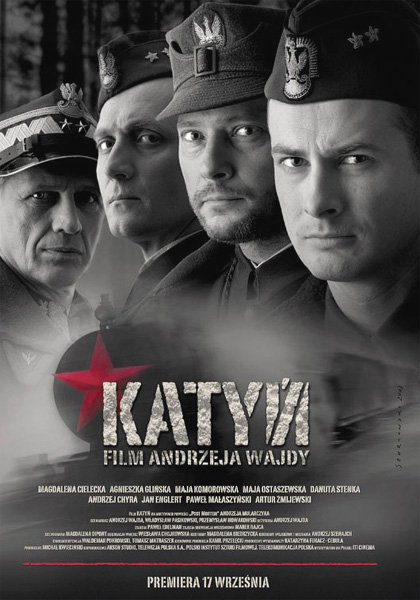
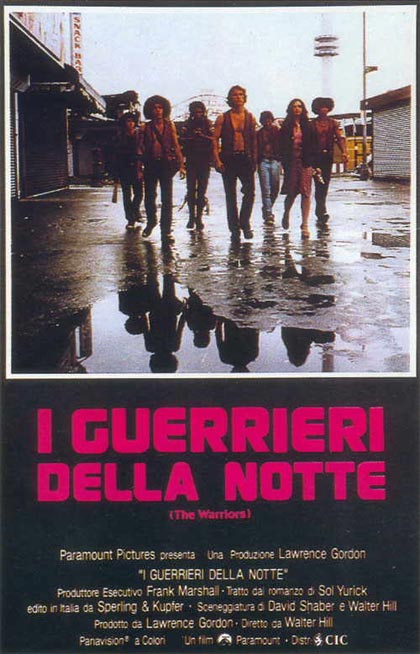

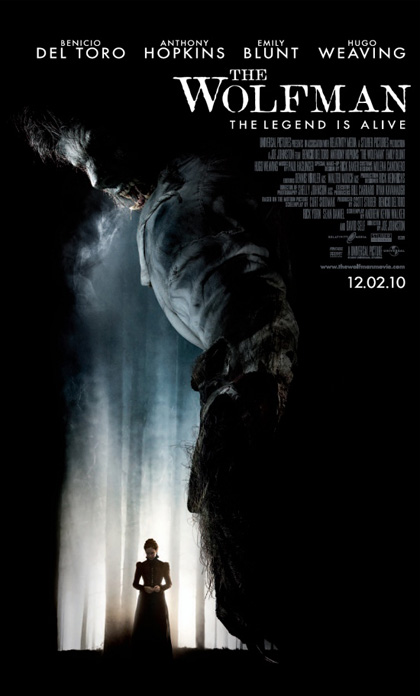

















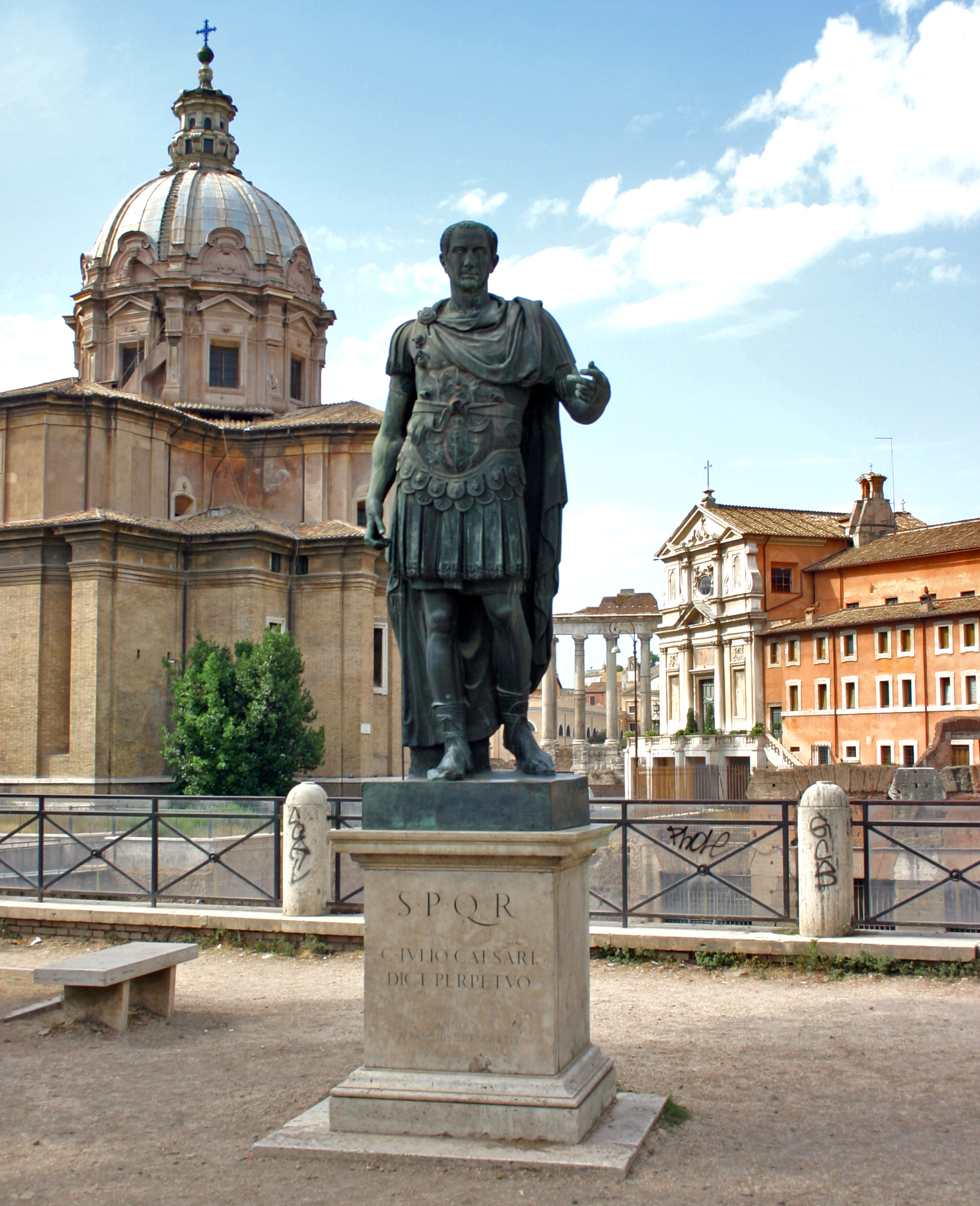

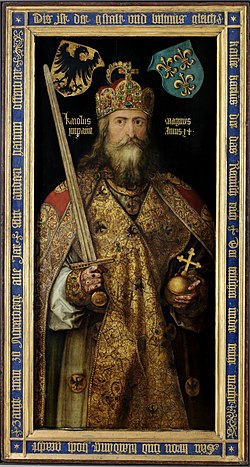






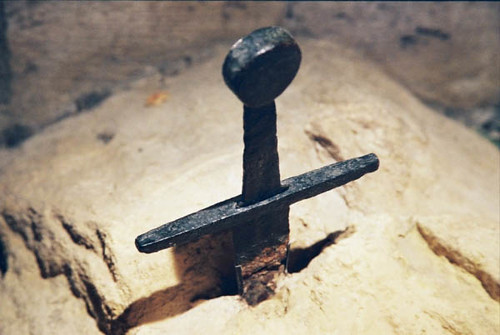







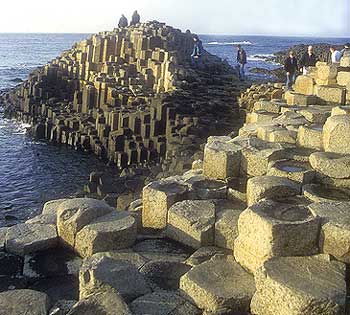















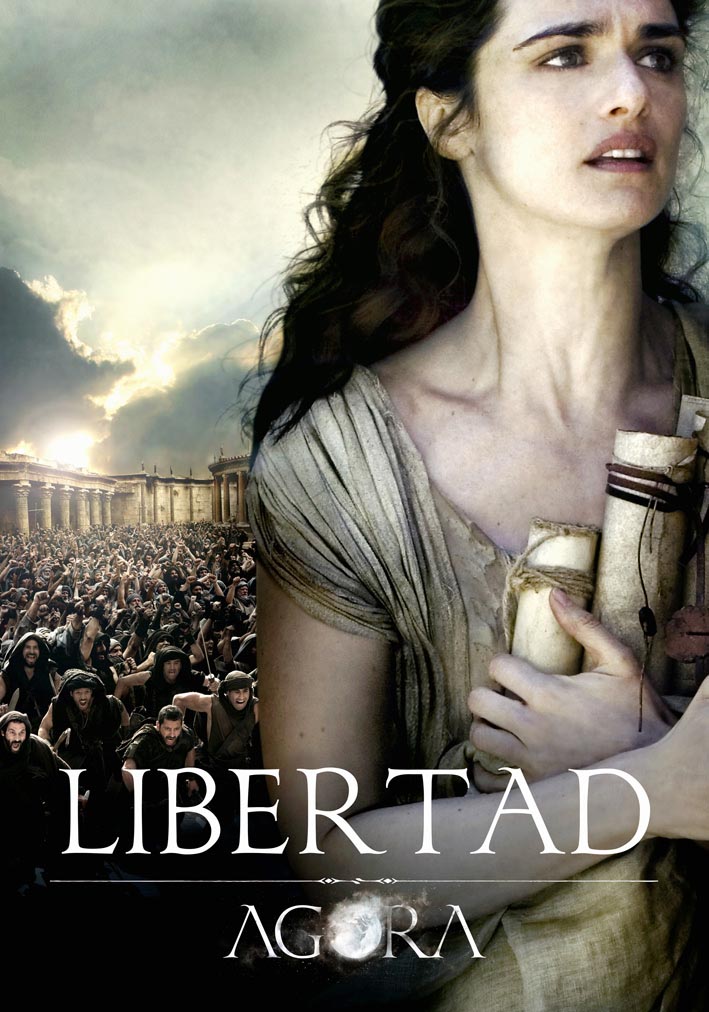

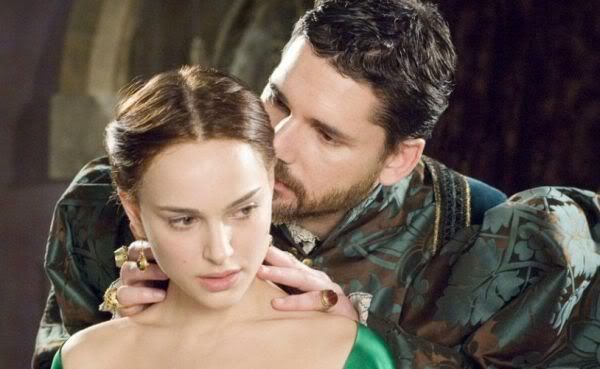









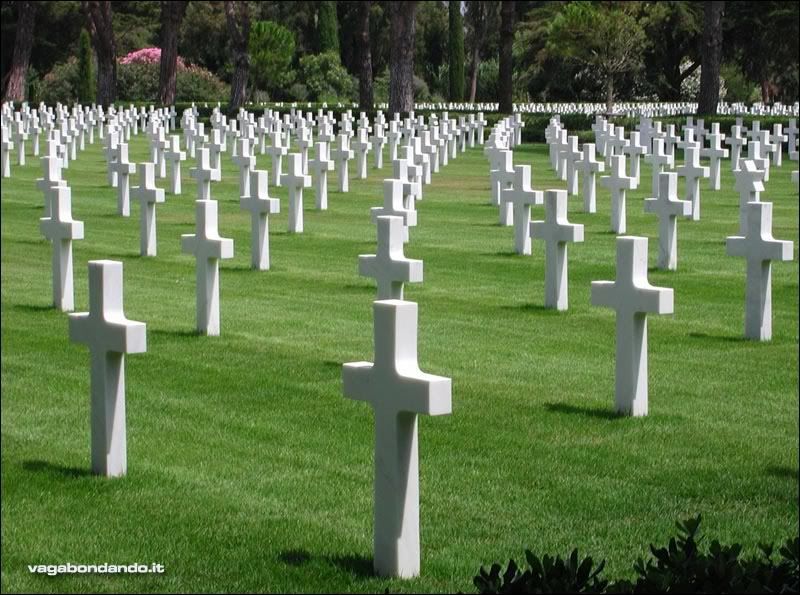











Nessun commento:
Posta un commento